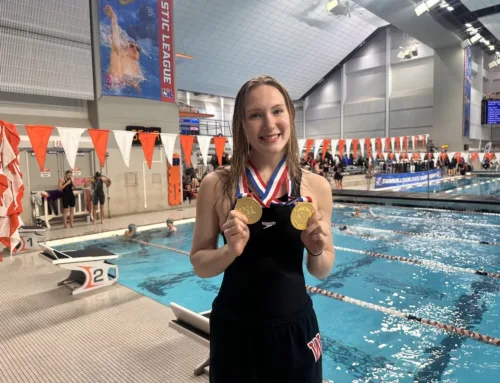Al Harris, J.L. Long’s principal, and his wife questioned public school – their employer – for their twin daughters.
Pressure from their neighbors and not-too-flattering rumors made them think twice.
Their daughters recently graduated from Texas A&M, and both want to teach in DISD.
“Staying involved in your children’s education is more important than where you send them,” Harris says. “You can get a good education if you work at it.”
Harris has worked in DISD for 16 years, and this is his third year as Long’s principal. He has had to deal with Long’s seemingly bad reputation, which he says the school doesn’t deserve.
“There’s a sensation, almost hysterical perception being promoted by the media,” Harris says. “People are amazed how quiet it is when they come in during class. I don’t know what they were expecting.”
Long’s strong point is its comprehensive curriculum in fine arts, academics and athletics, plus its multi-culturalism and the fact that it’s a regional school for the deaf, Harris says. A strong point of all public education institutions is the curriculum choices parents and students have. In DISD, they can apply for a magnet school program or go to their neighborhood schools. In their local school there are remedial, regular and advanced curriculum courses for students. They can get involved in sports or go into fine arts. And there are many academic programs, such as Odyssey of the Mind and Math Olympiad. In a public school, the education is there for the taking.
“All educators are of the opinion that each child can learn. Our challenge is to see that that happens. And I mean that in the broadest sense. They can learn to say no to drugs. They can learn that citizenship is not just for nerds. It’s not just the basics of math and science.
“Everyone expects the public schools to pick up the slack. As a result, the measure of our success is not fully evaluated. They’re evaluating us on test scores. The value of life cannot be separated out by the knowledge of math and science.”
When parents have questions about Long, Harris says all he can do is show them the school and let them make their own decision.
“My concern would be is the staff good enough for my child,” Harris says. “Most of the staff here isn’t just good, they’re really good. What’s the climate of the school? Is there fear on the kids’ faces? Do the people give a feeling that they care about my kid? As a parent I’m not looking for safety and efficiency, I’m looking for a sense of: These kids, all kids, are important.”
“I’m a strong supporter of a public school education,” says Karen Rogers, principal of Lakewood Elementary. “I chose that as a career, like parents choose it for their kids.”
And almost daily, Rogers deals with parents who are deciding between Lakewood and private school. Their biggest concerns are challenging curriculums, class sizes and discipline.
“I don’t give them a sales pitch,” Rogers says. “I tell them to come look at the school. I ask people not to make judgments by what they see driving by, but by what you see when you step inside.”
“Look at the children’s faces,” Rogers says. “They should look happy, or at least intensely involved. Listen to the tone in the classroom. Teachers should be directing or guiding gently and softly. Listen to how many of the voices in the room are children, not teacher talk.”
Rogers has been with DISD for 25 years. She was hired as white flight began, when the schools were desegregated and many upper-class white families pulled their children out. Over the years, Rogers confronted a lot of the myths of DISD.
“My spirits were never dampened,” Rogers says. “I discount that as an uninformed, unfortunate person.”
One of the reasons Lakewood is so good at education is because of its parent involvement, Rogers says. With parent input and the School Centered Education program, Lakewood redesigned its report card for kindergarten and first grades. The Talented and Gifted Program was expanded to include more students. And the staff development and remedial reading programs were redesigned.
Because the district is so big, Rogers says it has more resources and services available. She can have school memos translated into Spanish, Laos or any other language she needs in one phone call.
“You can’t beat the quality of our instruction,” Rogers says. “I don’t know any private school that offers a more rich ethnic student population. And I say rich because it’s not tokenism.”
“Now we tend to say these are our schools collectively. Even if you don’t have children here – come talk, come visit. If you’re willing to work for it, you can make any school in any setting what you want it to be.”
“The power of the public voice is enormous.”




